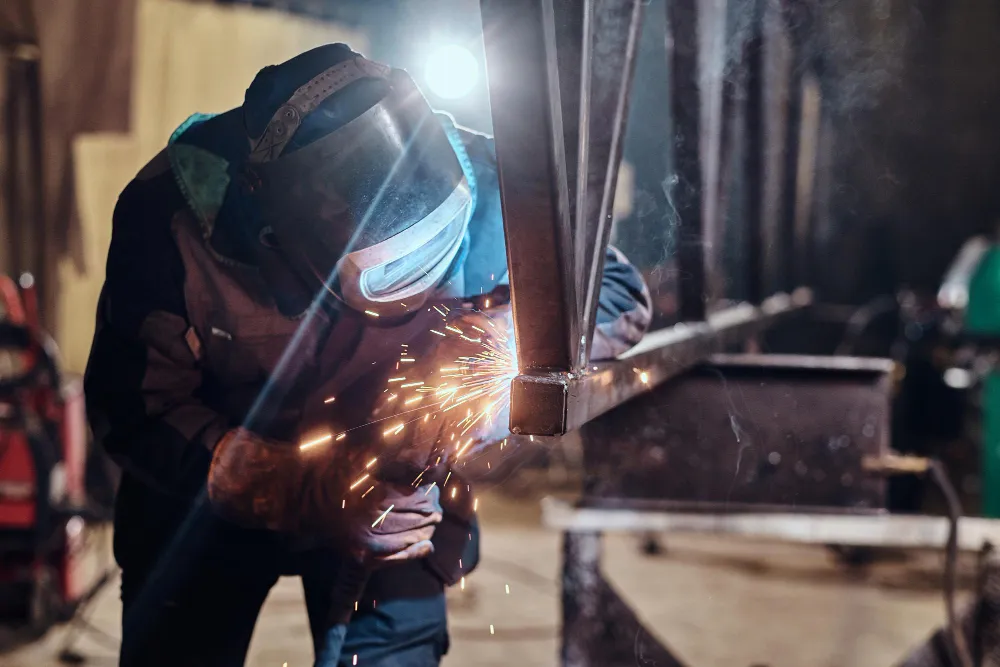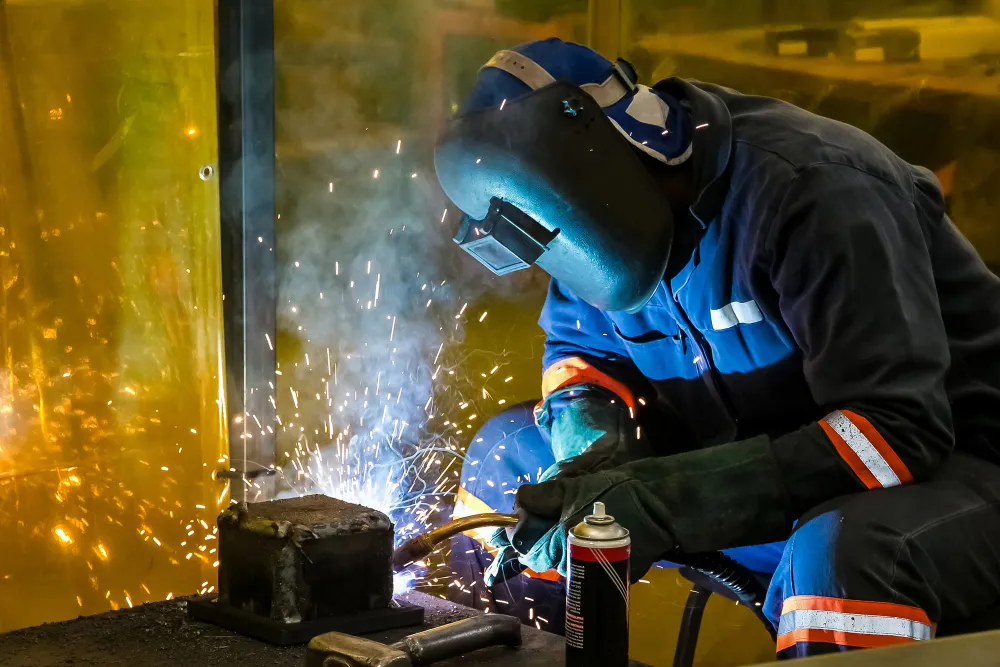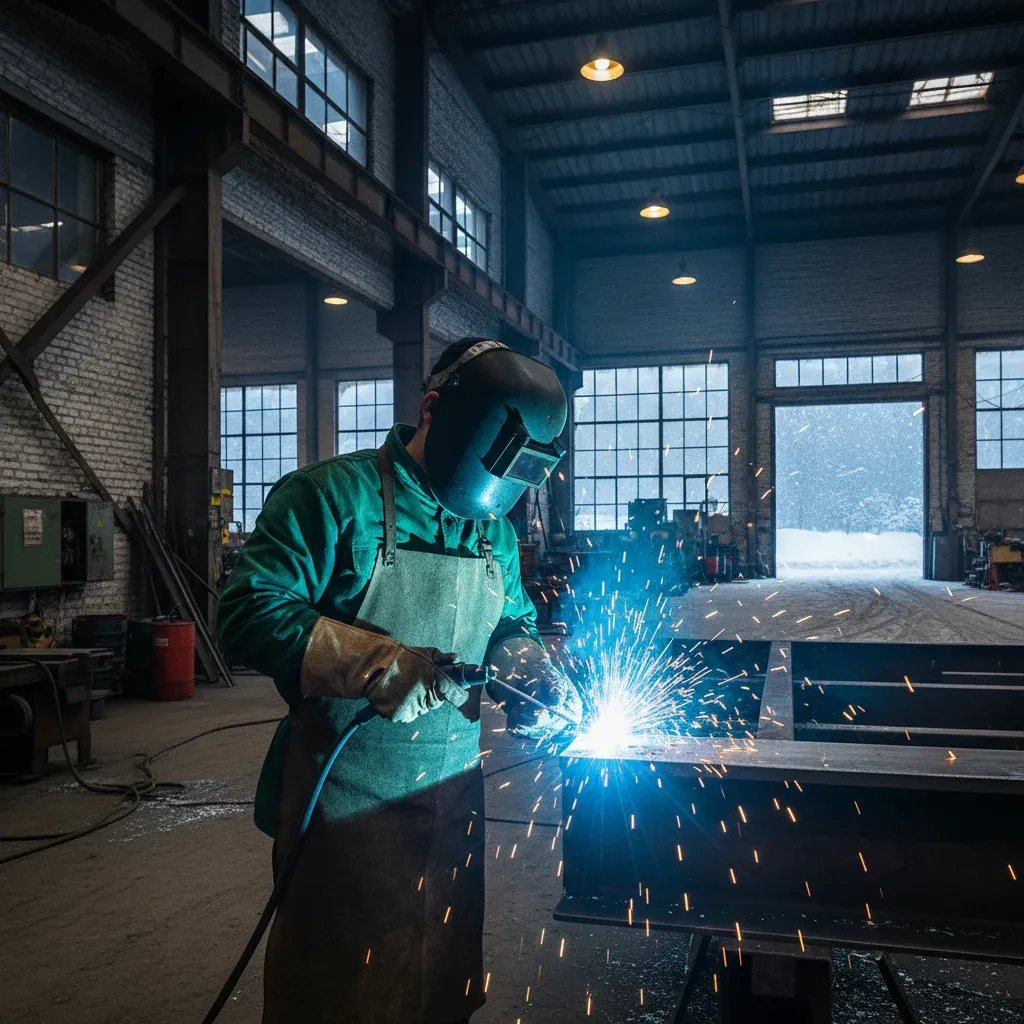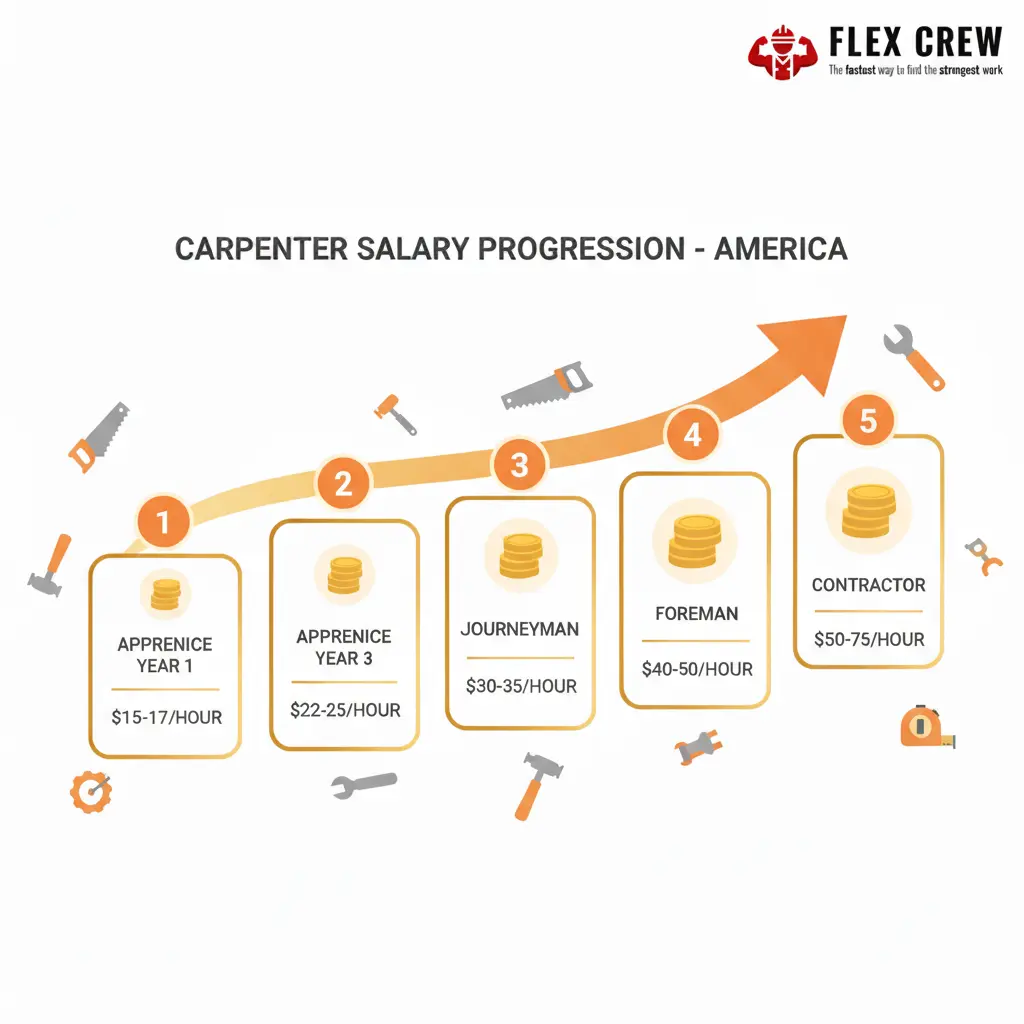Ironworkers are the muscle behind America’s skylines. From stadiums and bridges to high-rises and industrial plants, they make structures stand tall and stay that way.
If you’ve ever thought about getting into the trades and you’re not afraid of heights, this guide breaks down how to become an iron worker, what to expect, and how FlexCrew can help you land the right opportunity.

What does an iron worker do?
Iron workers handle steel and reinforced iron to build and support massive structures. Depending on the job, they could be:
Erecting steel beams hundreds of feet in the air
Installing rebar to reinforce concrete foundations
Operating cranes and hoists
Welding beams together
Reading blueprints and safety layouts
Installing ornamental metal like staircases and railings
You’ve probably seen their work all around—bridges, sports arenas, factories, and even solar panel farms.
Is ironworking a good career?
Absolutely. While the work is tough, the payoff is big—both in pride and pay.
Here’s why more young people are looking into ironwork:
Solid pay: Apprentices start around $30,000/year and journeymen can earn $60,000+ (plus OT).
Demand is strong: Construction isn’t slowing down—especially in places like Ohio, Florida, and Texas.
No student debt: You earn while you learn.
Growth options: Foreman, safety inspector, estimator, instructor—once you gain experience, the ladder’s wide open.
What does it take to become an ironworker?
You don’t need prior experience, but you do need to meet a few basic requirements:
Be at least 18 years old
Have a high school diploma or GED
Pass a basic math test and a drug screen
Be physically fit—this job is demanding
Be willing to work at heights and in all kinds of weather
Bonus: If you’ve got welding experience or construction helper work, that’s a great head start.
Step-by-step: How to become an ironworker
1. Finish high school or earn a GED
Most programs require one or the other before you apply. If you’re still in school, focus on math, shop class, or any kind of hands-on learning.
2. Apply for an apprenticeship
This is how almost every ironworker gets started. Apprenticeships are usually 3–4 years long, and you’ll get paid from day one. Most are through local unions, trade colleges, or private contractors.
You’ll need to:
Fill out an application
Pass an aptitude and fitness test
Go through an interview
Complete a drug screening
FlexCrew works with contractors who hire apprentices across the country we can help you find a program that fits.
3. Start training on the job
Once accepted, you’ll learn in the classroom and in the field. Topics include:
Welding and rigging
Blueprint reading
Fall protection and safety
Rebar tying and structural layout
Crane signaling and total station usage
Most apprentices go to class a few times a year and work full time the rest of the time.
4. Earn your journeyman card
After 4 years (or about 6,000 hours), you’ll test out and become a journeyman ironworker. That means more pay, more responsibility, and nationwide job opportunities.
What kind of ironworkers are there?
Ironworking includes several specializations. You can stick to one—or learn multiple.
Structural: Steel beams, towers, bridges
Reinforcing (rebar): Foundations, concrete walls
Ornamental: Stairs, railings, decorative metalwork
Rigging & Machinery Moving: Lifting and setting equipment or large panels
Some workers eventually move into safety roles, supervision, or even teaching apprentices.

What skills help in ironworking?
You don’t need to be a bodybuilder—but you do need to be dependable and focused.
Here are the top qualities that lead to success:
Physical strength and balance
Good hand-eye coordination
Not afraid of heights
Strong communication skills
Ability to show up on time, every time
If you’ve ever done CrossFit or played a sport, you’re already ahead of the game.
Tools ironworkers use every day
Ironworkers rely on a solid set of gear:
Safety harnesses and fall arrest systems
Welding torches
Pliers, cutters, and beam wrenches
Tablets and layout devices (yes, tech is part of the trade!)
Cranes and power hoists
Training programs cover all of this—and FlexCrew employers supply the tools you need on the job.
What’s the pay like?
Here’s a rough breakdown:
Experience Level | Pay Range |
Apprentice | $17–$25/hour |
Journeyman | $25–$38/hour |
Foreman | $35–$45/hour |
In some metro areas like NYC or Chicago, journeymen make over $95/hour with full benefits and overtime.
Where are ironworkers most in demand?
FlexCrew regularly places ironworkers in high-growth markets, especially:
Columbus, OH – Data centers, bridges, new construction
Tampa, FL – Coastal buildings, hotels, and airport expansions
Austin, TX – Tech campuses and stadium projects
Nashville, TN – Mixed-use towers and infrastructure upgrades
Indianapolis, IN – Industrial builds and steel frame developments
Why apply through FlexCrew?
At FlexCrew, we help ironworkers connect with top-tier contractors who value skill, safety, and fair pay. Whether you're just starting out or looking for your next big job, we’ll match you with crews that fit your goals.
Get placed faster
Weekly pay + benefits
Support from recruiters who understand construction
Entry-level and journeyman openings available
👉 Start your application today
FAQs About Becoming an Ironworker
How long does it take to become an ironworker?
About 3–4 years through an apprenticeship.
Do I need to join a union?
Not always. FlexCrew works with union and non-union contractors.
Do ironworkers travel?
Sometimes. Projects in other cities may include travel pay and bonuses.
Is the job safe?
Yes—as long as you follow safety procedures. Training programs emphasize fall protection, communication, and teamwork.
What if I have no experience?
That’s okay! Apprenticeships are designed to train you from the ground up.
Ready to start building your future with FlexCrew?
Apply now and we’ll help you become an ironworker who gets hired, gets paid, and grows fast.


